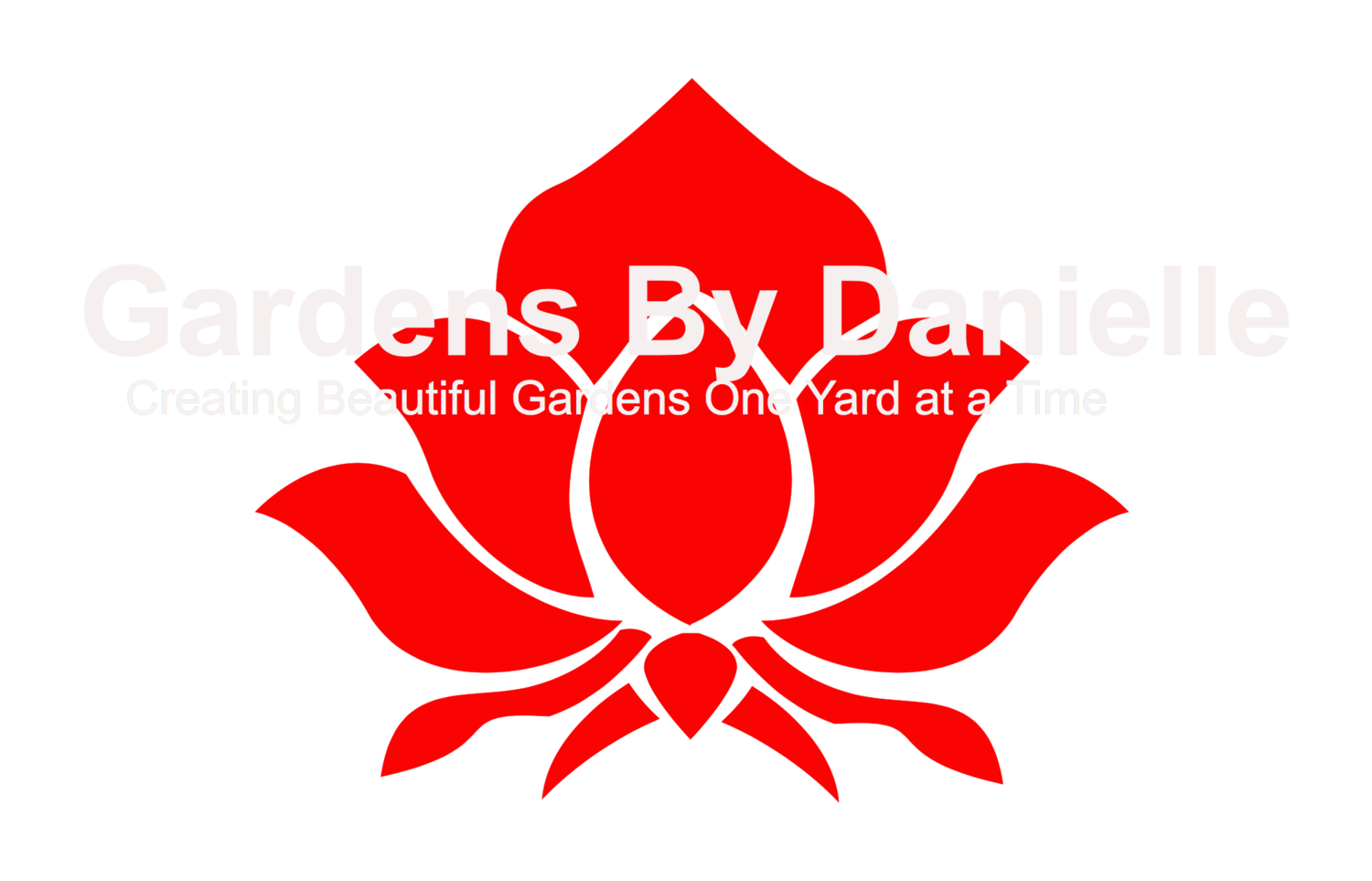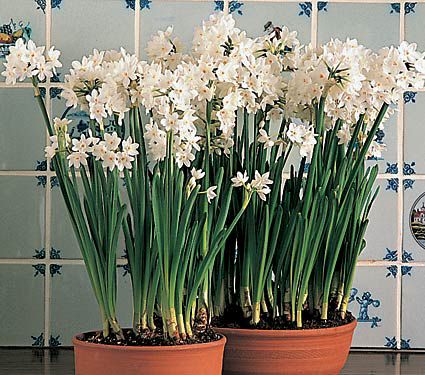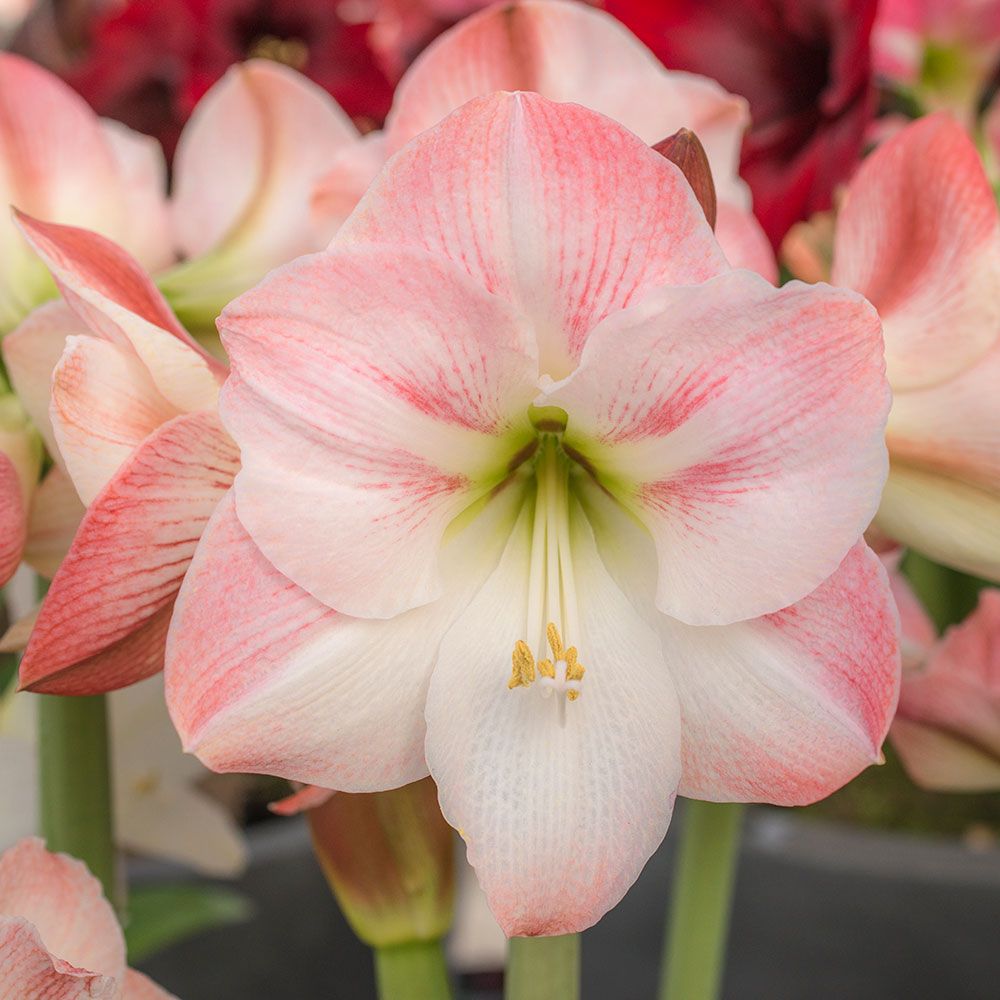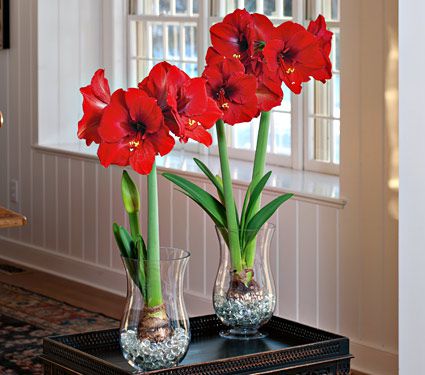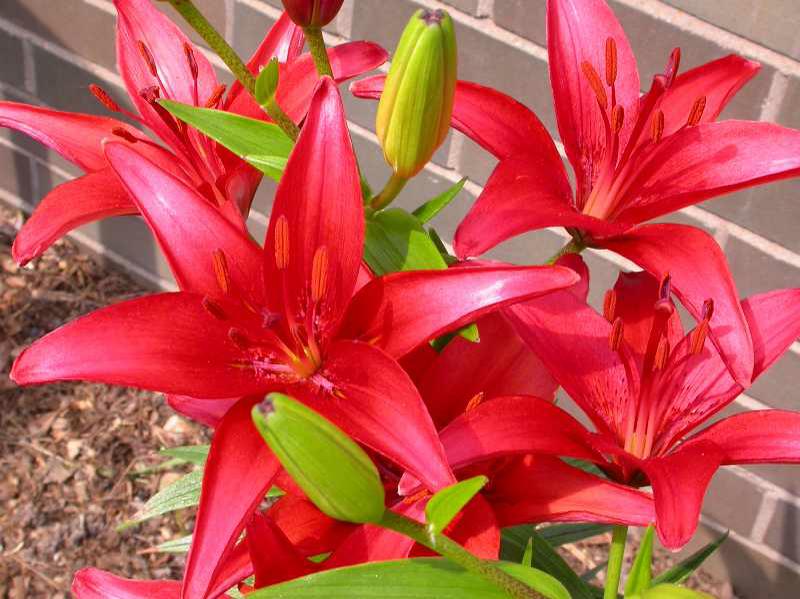
Welcome to Gardens By Danielle's blog! The blog will provide readers with tips and tricks for all things garden related, as well as give timely tips once a month. We hope you enjoy it!
Timely Tips...
In the Philadelphia area, its time to start putting your garden to bed for the winter. This means pulling up annuals and cutting back perennials to the ground. The annuals and perennials will die back in the next couple of weeks after we start getting hard frosts. Some people prefer to leave the perennials until the spring and then cut back the old, dead growth then. You'll also want to spread leaves or compost over your vegetable garden and other garden beds. Some people prefer to put mulch down instead, but this is not completely necessary.
This month, its also time to start forcing flower bulbs indoors. Some of the most popular bulbs for forcing indoors are Paperwhites and Amaryllis. When started now, they will bloom in time for the holidays. Some people also like to force spring blooming bulbs like, Daffodils, Tulips, Hyacinths, Crocus, and Iris indoors also. Spring blooming bulbs need to be pre-chilled for several weeks before being forced indoors. This fools the plant into thinking its spring, so it will then bloom indoors during the winter. These bulbs can then be planted outside in the spring.
Paperwhites and Amaryllis don't require pre-chilling since they are tropical. Paperwhites are tall and thin with lots of small, white, daffodil-like flowers that are fragrant. Amaryllis have 1-2 stalks with 4 large flowers per stalk. They come in orange, pink, red, white and bicolors. Amaryllis and Paperwhite both need to be staked when they get tall or they can tip or lean over. Paperwhites bloom 4-6 weeks after being planted and Amaryllis bloom in 8-10 weeks after planting.
Paperwhites can be planted in soil or in a vase in fine river stones or gravel. They need to be planted with their crowns exposed if planted in gravel. Place them in a sunny window and water whenever the soil dries out. If the Paperwhites are planted in gravel, keep the water level up to the bottom of the bulbs.
Paperwhites (Photo Courtesy of White Flower Farm)
Amaryllis can also be planted in soil or river gravel. When Amaryllis are planted in soil or river stones, they should only be buried with their crowns and 1/4 from the top of the crown exposed. Some of my favorite cultivars are 'Apple Blossom' and 'Ferrari.' 'Apple Blossom' has blooms that are a light pink and white. 'Ferrari' has bright cherry red blooms. Amaryllis should only be watered when they dry out almost completely when planted in soil and the water level should be maintained right under the surface of the stones when grown in stones. Don't overwater or the bulbs will rot. Amaryllis bulbs will re-bloom next year if treated in a certain manner after blooming or you can start with new bulbs every year.
Amaryllis 'Apple Blossom' (Photo Courtesy of: White Flower Farm)
Amaryllis 'Ferrari' (Photo Courtesy of: White Flower Farm)
I hope these tips help to bring some color and beauty during the dark, grey days of winter.
Timely Tips...
May is the perfect time of year to plant perennials and also when most local nurseries have the most selection of perennials in stock. In this post, I decided that it would be a good time to talk about my favorite perennials. I will be listing fifteen of my favorite perennials for sun, part sun and shade. (Five that are ideal for sun, five that are ideal for part sun and five that are ideal for shade). I have chosen these perennials because of hardiness, ease of care, spring and summer interest, and color variety.
Full Sun:
Gaillardia 'Arizona Sun'- Blanket Flower
Gaillardia are one of my favorite perennials for sunny borders. The plants have always performed well in my garden with bright reddish-orange centers and yellow around the edges of the petals. Their non-stop bloom from late spring through late summer are sure to be show stoppers and the plants are always full of blooms. I listed the cultivar 'Arizona Sun' here because that is my favorite cultivar that has always performed well for me. These are short plants that only reach 1/2 to 1' tall. Gaillardia are also drought tolerant, once they are established. As an added bonus, these plants attract birds and butterflies.
Gaillardia 'Arizona Sun' (Photo Courtesy of Missouri Botanical Garden)
Phlox paniculata- Garden Phlox
Phlox is another one of my favorite perennials for use in sunny perennial gardens. The showy clusters of blooms on top of the bushy plants add great color to gardens everywhere. The flowers come in light pink, dark pink, light purple, dark purple and white. Phlox usually blooms from mid summer until early fall and grows to about 1 1/2- 2' tall.
Phlox paniculata (Photo Courtesy of Missouri Botanical Garden)
Delosperma- Ice Plant
Delosperma is great as a ground cover for sunny rock gardens or perennial borders. These succulent plants are full of daisy-like blooms from early summer to early fall. The flowers come in pink, red, purple, yellow, and orange. The plants are drought tolerant and prefer sandy soils kept on the dry side.
Delosperma (Photo Courtesy of Missouri Botanical Garden)
Echinacea purpurea- Purple Coneflower
Purple Coneflowers have dark red-brown centers and light purple petals. The great thing about these plants is that they attract bees and butterflies. Purple Coneflowers are great for the sunny perennial garden and top out at 2-5' tall. Echinacea blooms from early to late summer.
Echinacea purpurea- Purple Coneflower (Photo Courtesy of Missouri Botanical Garden)
Baptisia australis- Blue False Indigo
I first saw this plant in a garden on a garden tour that I was on a couple of years ago and knew that I had to have it. This is a bushy plant with dark green-silver leaves and is full of pea-like blooms all over the plant. (This plant is in the Pea Family). The blooms are a light-purplish-blue in color and attract birds and butterflies. Baptisia is a great addition to any sunny perennial garden. This plant grows to 3-4' tall and blooms from late spring to early summer.
Baptisia australis (Photo Courtesy of Missouri Botanical Garden)
Part Sun:
Agastache- Giant Hyssop
This plant has small, attractive trumpet shaped flowers in colors ranging from orange, pink, red and purple. Agastache tolerates part sun and grows to about 2-3' in height. A great thing about this plant is that it attracts butterflies. It usually blooms from early summer to early fall.
Agastache (Photo Courtesy of Missouri Botanical Garden)
Amsonia hubrichtii- Blue Star
I learned about this plant when I was in college and didn't really like it at first, but it grew on me since then and a now I adore the plant. Amsonia hubrichtii features feathery foliage and tiny powdery blue flowers from mid to late spring. This plant gets to be about 2-3' tall and attracts butterflies. I also love how the leaves turn a pretty yellow color in the fall, too.
Amsonia hubrichtii (Photo Courtesy of Missouri Botanical Garden)
Lilium, sp. -Asiatic/Oriental Lily
These can be grown from bulb or plant. Asiatic Lilies come in white, yellow, red, pink, and orange. Oriental Lilies also come in a variety of colors, but usually are a mixture of two colors, with the center being one color and the outside of the flowers being another color. They come in color combinations such as yellow and orange, white and pink, etc. The flowers are showy and normally bloom in early summer. Asiatic and Oriental Lilies tolerate part shade as well as full sun. Lilies require regular, even moisture, but should not be allowed to dry out or get too wet. Usually reaching a height of 3-4' tall, these plants may require staking. After the foliage and stems turn yellow, they can be cut back.
Lilium, sp. (Photo Courtesy of Missouri Botanical Garden)
Aquilegia canadensis- Columbine
Columbine is a great plant for the perennial garden that receives part sun. Blooming in mid- late spring, this plant has basal foliage with clusters of blooms that rise up above in the center of the plant. The flowers come in pink, purple, yellow, and red. Grows to be 2-3' tall.
Aquilegia canadensis (Photo Courtesy of Danielle Charlton)
Chelone lyonii- Pink Turtlehead
Pink Turtlehead is a great perennial for gardens that receive part sun and are even great for rain gardens. The flowers are pink and there is even a cultivar with white flowers. The flowers supposedly look like turtleheads, which is where this plant gets its common name. Chelone blooms from mid summer to early fall and gets to be about 2-4' tall.
Chelone lyonii (Photo Courtesy of Missouri Botanical Garden)
Shade:
Lamprocapnos spectabilis- Bleeding Heart
Bleeding Heart is by far one of my favorite perennials for the shade garden. Its a bushy plant with tiny heart shaped pink and white flowers. This plant blooms from mid to late spring and gets to be about 2-3' in height.
Lamprocapnos spectabilis (Photo Courtesy of Danielle Charlton)
Trillium- Wood Lily
Trilliums are ideal for shady woodland gardens and are great for spring interest, blooming in mid to late spring. The flowers come in maroon, yellow, orange, and reddish green in color. Growing to 1-1 1/2' tall, the plant dies back in early summer.
Trillium (Photo Courtesy of Missouri Botanical Garden)
Heuchera- Coral Bells
Heuchera is better known for its foliage of all different colors than flowers. It has small, insignificant flowers from early to mid summer on long stalks that rise above the foliage. The foliage comes in colors of green and white, orange, yellow, brown and dark purple. Its a perfect addition to any shade garden.
Heuchera (Photo Courtesy of Missouri Botanical Garden)
Helleborus- Hellebore (Lenten Rose)
The attraction of Hellebore is that they have dark green leaves that are held on the plant year round. Flowers appear around early to mid spring and range in colors from purple, pink, lime, white, red, and yellow. The blooms usually hang down like bells. The plant is perfect for the shade garden, and only reaches 1/2-1' tall.
Helleborus (Photo Courtesy of Missouri Botanical Garden)
Pulmonaria- Lungwort
Lungwort is perfect for the shade garden with its green leaves with white spots and purple, pink or blue flowers. It blooms in mid spring and is low growing, at about 1/2-3/4' tall.
Pulmonaria (Photo Courtesy of Missouri Botanical Garden)
Bibliography: Missouri Botanical Garden, Plant Finder. http://www.missouribotanicalgarden.org
Timely Tips...
Spring is a busy time in the garden and the month of April is no exception. Here is a list of tasks that should be done this month, which I will be talking about in this post:
Dividing and transplanting hardy perennials, such as: Heuchera, Daisies, Hellebore, and Hosta
Cleaning up dead plant debris from around plants
Starting a compost pile
Building and prepping raised beds for planting
Installing supports/stakes for plants like Peonies
Giving flowering bulbs and tubers a head start indoors, examples include: Cannas, Dahlias, Caladiums, Begonias, Lilies, etc.
Cutting back last year's growth on Hellebores
Installing a trellis for peas
Planting asparagus
Divide and Transplant Hardy Perennials: This month, hardy perennials, such as Daisies, Hellebore, Hosta, and Heuchera can be divided and transplanted. The entire clump should be dug up before the next step can take place. This can be done with a sharp shovel. You can slice the plant right down the middle of the crown to cut it into half or into quarters, depending on how large the clump is. The divisions can either be transplanted into other areas of your yard or shared with neighbors, friends or family.
Clean Up Dead Plant Debris From Around Plants: If you haven't already done this task in the fall, it should be done now, before a lot of the new growth starts to sprout and grow. Sometimes, you can just do this by pulling it away with your hands, other times this task will require scissors or pruners to trim the old, dead foliage away. This is really important to prevent diseases, pests, and fungi which can cause problems with your plants when they start to grow new growth during the growing season.
Start a Compost Pile: There are many benefits of having your own compost pile. Compost can provide your plants with nutrient rich, organic fertilizer and mulch. Another important benefit of a compost pile is that it is sustainable, since your garden waste and food scraps can be discarded in it, where they decompose and become quality soil for use in your garden. These are just a few of the many benefits of compost. You can either devote a corner or area of your yard for compost or build your own compost bin out of almost any type of material. I have seen compost bins built out of cinderblocks stacked on top of each other, wooden pallets used for shipping, lumber, chicken wire and lots of other materials found around your house or at the local hardware store. There are also ready-made metal or plastic compost bins on the market, that have cranks that make turning and mixing your compost easier, though these are not necessary. You will need to position the compost pile in a shady area of your yard, so it can heat up to the proper temperature for decomposition. You can put things like leaves, grass clippings, fruit and vegetable peels, cores, and scraps, dead plant material and other forms of yard waste in the compost pile. Just don't use weeds, since weeds can start growing in a compost pile and take over. You will need to turn or mix your compost every now and then, so you may not want to make your compost pile too large. Here are some compost recipes and building plans to get you started: https://www.epa.gov/
http://www.motherearthnews.com/
Build and Prepare Raised Beds: Raised beds are an excellent idea for people who have trouble bending over or kneeling, since raised beds are simply that: garden beds that are higher than ground level. Seniors and physically challenged people can still enjoy gardening without having to bend over or kneel down. The other great benefit of raised beds is that if you have poor or contaminated soil, you can still do well with gardening or growing your own food since you can fill a raised bed with top soil or any soil mix. (or better yet, compost!) Raised beds can be made of wood or plastic. Here are some great resources with building plans and tips on raised beds to get you started: http://www.rodalesorganiclife.com/ http://www.almanac.com/
Install Stakes/Supports: This time of year is also great to stick wooden or bamboo stakes or supports in the ground near plants like Peonies. You can even use sticks and branches found around your yard for a more natural look. Later on the plants will need the supports to lean on and to support them when they start growing and blooming. You can also buy special wire supports made for Peonies and other types of plants that are placed over where the plant is growing. The plant then grows up through the support.
Start Summer Flowering Bulbs Indoors: Summer flowering bulbs and tubers like Canna, Dahlias, Begonias, Caladiums, Lilies, etc. can be given a head start by starting them indoors before planting them outside in May. They will bloom sooner and have a head start. This is optional, as these can also be planted directly in the ground outside after the danger of frost has passed. You will need a good quality, well draining potting soil without moisture retention crystals or fertilizer in it. You will also need 6" pots. Plant one bulb or tuber per 6" pot, water well, but don't soak and place in a windowsill. Follow the instructions on the depth to plant the bulbs and tubers with the literature that came with them.
Cut Back Last Year's Growth: On plants like Hellebores that hold onto their leaves year around can have old growth that drops to the ground, has dead spots and looks unsightly this time of year. There will most likely be new, green growth and flowers or buds coming up from the middle, you'll want to leave those. Just cut back the old, unsightly growth of last year as close to the base of the plant as you can.
Install a Trellis for Peas: In the vegetable garden, plants that you planted earlier this spring, like peas will grow tall and will eventually need support. To give the plants this support, they will need a trellis to lean on and grow up. These can be bought or built from wood, bamboo or metal poles. Here are some links to DIY trellis plans to get you started: http://www.bhg.com/
Plant Asparagus: Asparagus is a crop that takes 2 years before it begins to produce asparagus. It is a crop that needs its own bed as it can spread and get rather large. It can either be planted as seeds or crowns. I recommend planting crowns, as it takes a lot less time to grow then from seed. Here are some links that explain how to plant asparagus and give good tips: http://www.rodalesorganiclife.com/garden/how-grow-asparas http://www.almanac.com/
Happy Gardening and Stay Tuned for Next Month's Post!
